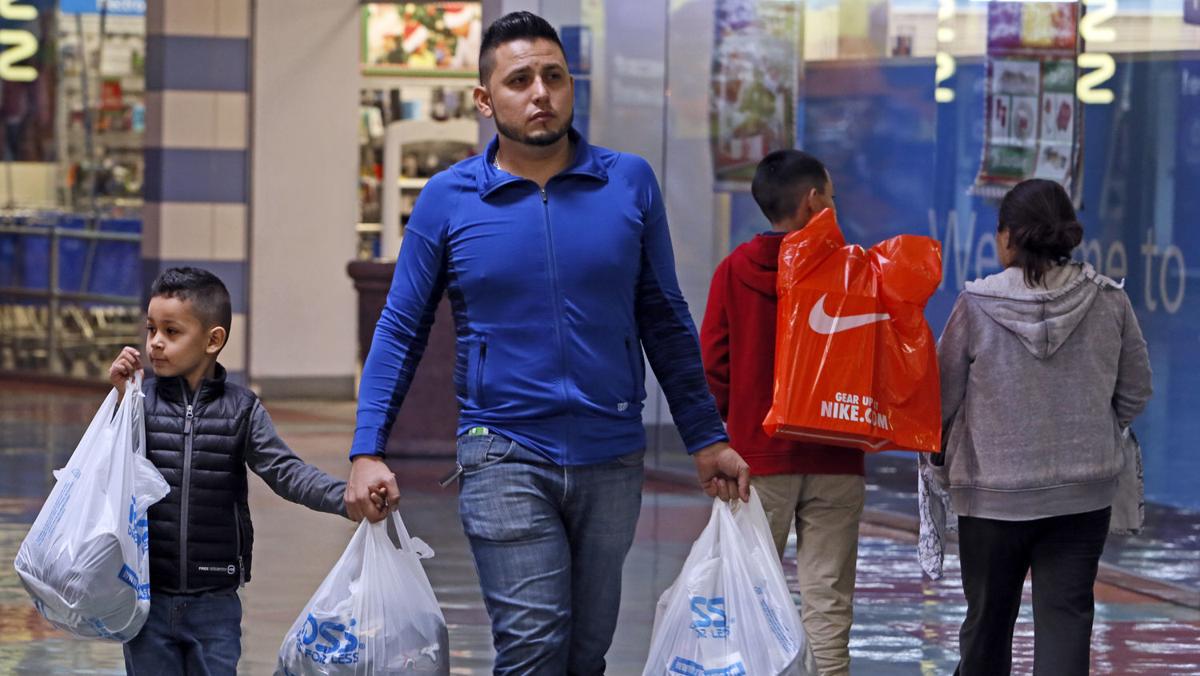Between calls for building a concrete barrier, complaints of unfair trade practices, name-calling and threats, something very important gets lost in the shuffle when we talk about the border. Something that’s all-American and which we can all agree on: shopping.
Visiting area malls or driving around town this week, you can’t help but notice the cars with Mexican plates. These are our neighbors to the south taking advantage of their vacaciones de Semana Santa (literally, Holy Week vacation) by descending on Tucson. These are the tourists that spend about $2.5 billion a year in Arizona — about half of that in Pima County alone.
So if you see them out and about, maybe talk more mall than wall.
Although the Trump administration continues to act tough on border security, has left DACA recipients in limbo and wants to add a citizenship question to the decennial census as a blatant attempt to intimidate immigrants and depress participation … wait … what was the good news at the end of this long sentence? Ah, yes! At least he’s not talking about Mexico that much.
The man who launched his campaign by calling Mexicans rapists (along with some, he assumed, good people), saying Mexico was going to pay for a border wall and threatening to pull out of the North American Free Trade Agreement, has been blessedly quiet on the southern front. Which is good for Southern Arizona.
Back in 2016, after the president was elected, the region saw a drop in Mexican tourism, said Felipe Garcia, executive vice president at Visit Tucson, who’s in charge of Mexican marketing and partnerships.
“Some people may say they don’t work at a restaurant or a shopping mall, so Mexican shoppers have no impact for them, but they do because they pay sales tax,” he said. “All those Mexican plates you see at the mall are helping to pay for our police, our firefighters, our schools, our libraries.”
To bounce back, the group redoubled its efforts, recording a series of videos with area mayors and county supervisors saying tourists were welcomed, as well as advertising through social media and television.
Their efforts seemed to work, Garcia said, with tourism back to normal.
The U.S. as a whole wasn’t that lucky, according to the U.S. Department of Commerce, which reported a more than 7 percent drop in Mexican tourists in 2017 compared with 2016, and the lowest total number in almost a decade. A strong dollar may have contributed to the drop, but Mexican travel to Canada was up during the same period, so that money simply went across another border.
Speaking from personal experience, you have to try really hard to alienate Mexican shoppers.
As a young consumer in training, my family would cross the border into El Paso, Texas, every weekend to do our shopping, and it was always a crapshoot. How long would you have to wait, 15 minutes or two hours? Would you get a friendly customs officer or some jerk? Would the sales clerk be extra condescending as she told you she didn’t speak Spanish or would she gracefully shift from English?
But whatever we faced, we were a loyal bunch. The products were better, the shops were nicer, and, most importantly for me, the Happy Meals were plentiful.
Times have changed since then, though. Mexico has developed considerably, NAFTA has integrated our markets and American companies have a strong presence across the border.
You no longer need a passport if all you want are some McNuggets. And, if anything, it is harder than ever to visit the United States, with more restrictions and consistently longer wait times at the ports of entry. But still, Mexicans keep coming to spend their money here. Nos gusta que nos traten mal, I guess.
Even if that’s the case, and maybe we do like be to be treated badly, Tucson is not taking Mexican loyalty for granted, said Garcia.
“They have an H&M there, they have Sephora. Online shopping is growing, too. So why are they coming? We offer them an experience. They are welcomed here and they get to make good memories,” he said.
It’s always difficult to make people understand the interrelated nature of the border, how culture and language freely flow back and forth, how people in Mexico feel a connection to their U.S. neighbors, even if that relationship is sometimes rocky.
So maybe the best way to convince people why we should be nice to our neighbors is because the customer’s always right.
Perhaps, if as Eric Trump says, his father only cares about one color — green — then the president can at least learn to respect Mexico as an important economic partner. It’s almost an experiment on what can win out, prejudice or greed.





